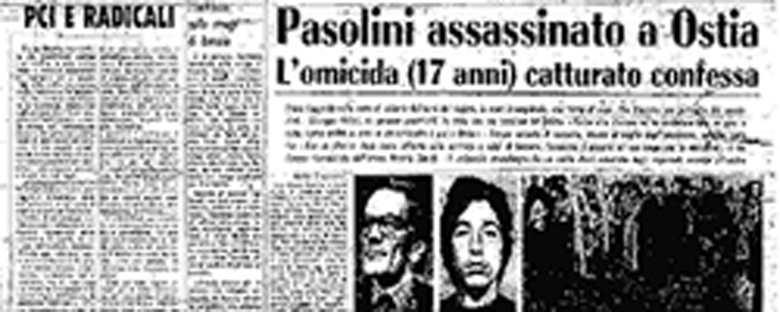If you were introduced to Boccaccio’s Decameron or Chaucer’s Canterbury Tales in high school, or enjoyed one of the many children’s adaptations of The Thousand and One Arabian Nights in your youth, the first thing you might notice about Pier Paolo Pasolini’s films of the same texts is the nudity. Indeed, nearly every episode of each film concerns the rustic, libidinous pursuit of casual sex and features an abundance of naked flesh — young and old, male and female.
If you are already familiar with the films of Pasolini, you might notice the trilogy’s unabashed optimism. These are some of Pasolini’s lightest, most beautiful and most generous works, wondrously imaginative and hopeful. Each film presents a bucolic paradise of loose morality and bawdy circumstance. There is little anxiety or explicit social criticism to be found in these films; rather Pasolini delights in the sheer carnality of the tales, the crooked smiles and raw fleshiness of his beatific young peasants, and the simple pleasure of a well-told story. Whether in spite of or because of the consistently sexual nature of the films’ episodes, the overall tone is one of child-like naïveté.
Of course, the air of naïveté with which Pasolini infuses this trilogy is entirely calculated. It is in the service of much more mature (and less child-like) themes of politics and aesthetics that the director employs this innocent tone. Taken individually, the films are pleasant, somewhat naughty entertainments. But collectively, the trilogy presents something much richer: a kaleidoscopic vision of the pre-industrial past and the role of art within this world.
Pasolini’s “trilogy of life” comprises adaptations of three medieval texts, each a compendium of multiple short tales that illustrate the interactions of faith, sex, and commerce in a variety of different voices and literary styles. Significantly, the subjects of all three works — The Decameron by Boccaccio, The Canterbury Tales by Geoffrey Chaucer, and The Thousand and One Arabian Nights of multiple authorship — are secular and proletarian, not exclusively concerned with nobility or with providing religious instruction like much of the other literature of their day. The three texts are also structured in similar ways: a frame-story establishes a situation in which it becomes necessary for a series of stories to be told (by a number of different characters in The Decameron and The Canterbury Tales; by a single character, Scheherazade, in The Arabian Nights). In these books, storytelling is a means to stave off boredom or even delay the moment of death, and thus becomes not merely a luxury but an activity partially fundamental to living. In these worlds, narrative serves a purpose, and the storyteller-artist has a unique position in his society. And in part, Pasolini uses his film adaptations to define his own position as an artist to the worlds of these books.
For this reason, it is interesting to note how drastically Pasolini alters the original works in his film adaptations. Certainly there is his emphasis of the sexuality in each text, but this is more an example of the director’s particular interpretation of the books rather than his revisions of them. Where Pasolini’s changes are most striking is in the structure of the films, particularly in his handling of the original frame-stories. While he clearly identifies with the notion of the integration of narrative and society that each book puts forward, he all but disposes with the narrative framework of the original texts. Boccaccio’s storytellers are gone, as is Scheherazade, and although Chaucer’s pilgrims are glimpsed briefly, none of them tells any tales. Instead, Pasolini re-frames the stories of the three works, depicting a much more subtle relationship between society and the narratives that illuminate it.
The Decameron

“Why create a work of art when dreaming about it is so much sweeter?” In concluding his film with this question, Pasolini is perhaps questioning his own dream, his idealization of this beautiful, bucolic world he has created in which peasant and artist and the Virgin Mary coexist in divine harmony.
The Canterbury Tales

Chaucer’s tales are at once more scatological and more cruel than Boccaccio’s, and so this second film is that much more gritty than its predecessor.
Arabian Nights

If Arabian Nights is the most colorful and aesthetically beautiful film of the trilogy, it is also the freest in its narrative structure and the least confined by its source material.
Of course, the manner in which Pasolini portrays the worlds of The Decameron, The Canterbury Tales and The Arabian Nights leaves him open to charges of exoticism. In many ways, the director’s idealization of all of the rustic, medieval settings of his Trilogy of Life is plainly the consequence of his socialist views of a romantic, pre-industrial paradise, before the rise of “disgusting consumerism.” He deliberately avoids almost any indication of the hardship and poverty of peasant life in the Middle Ages.
Nonetheless, like Giotto’s vision of the Virgin Mary and the collected dreams of The Arabian Nights, these films plainly represent a fantasy world — Pasolini’s hopeful imagining of what the world should have been like, and not as it is or ever was. These are dreams of paradise and of the inherent goodness and innocence of an imaginary past. For an artist as disenchanted with the modern world as Pasolini, The Trilogy of Life (of vitality, of youth, of sexual liberation) is a kind of last hope for humanity. But the director was aware of the limitations and deceptions of his vision and was dissatisfied with this dream: he formally rejected his series of films in a column for an Italian newspaper, written the year the trilogy was completed. Pasolini’s ultimate disillusionment with his dream-world thus yielded his final nightmare: Salò.
We don’t do comments anymore, but you may contact us here or find us on Twitter or Facebook.



